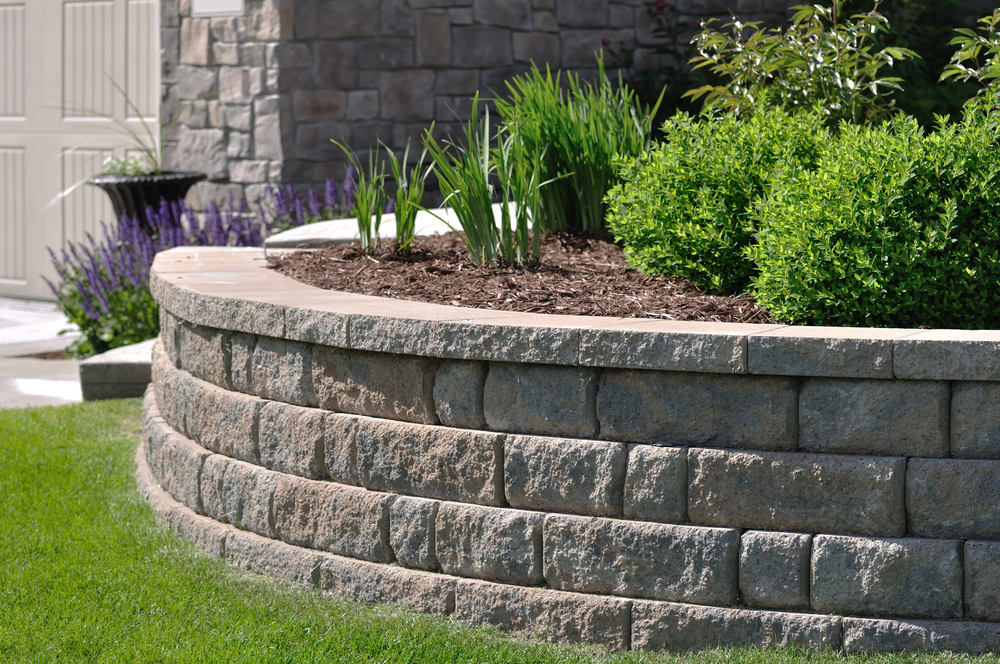Is a Retaining Wall Right for Your Property?
A retaining wall can be a great addition to your property, especially if you’re dealing with uneven ground or specific landscape challenges. Knowing why your property might need one helps you make smart decisions about protecting and enhancing your home’s appearance.
Prevent Soil Erosion
Soil erosion is a common problem, especially in places like Muskoka with hilly terrain and frequent rainfall. When rainwater flows down slopes, it can carry away the topsoil, leading to unstable ground and potential damage to your property. This is especially risky if your home is near a slope or water, where erosion can happen quickly. A retaining wall acts as a barrier, holding the soil in place and preventing it from washing away. In Muskoka, these walls are particularly important for protecting properties near lakes and rivers, helping to maintain the shoreline and the overall stability of the landscape.
Creating Usable Spaces
If your yard is on a slope, it can be challenging to use the space effectively for things like a garden, patio, or play area. Retaining walls offer a great solution by levelling out the land. They can turn steep, uneven areas into flat, usable spaces. This is particularly valuable in Muskoka, where the natural landscape often limits what you can do with your property. With a retaining wall, you can create terraced gardens or level backyards, transforming your sloped land into beautiful and functional outdoor areas that you can fully enjoy.
Enhancing Aesthetic Appeal
Maybe you’re thinking about a retaining wall not just for its practical benefits but also to make your property look better. Retaining walls can add a lot of beauty to your yard, especially in a place like Muskoka, where the natural scenery is so important.
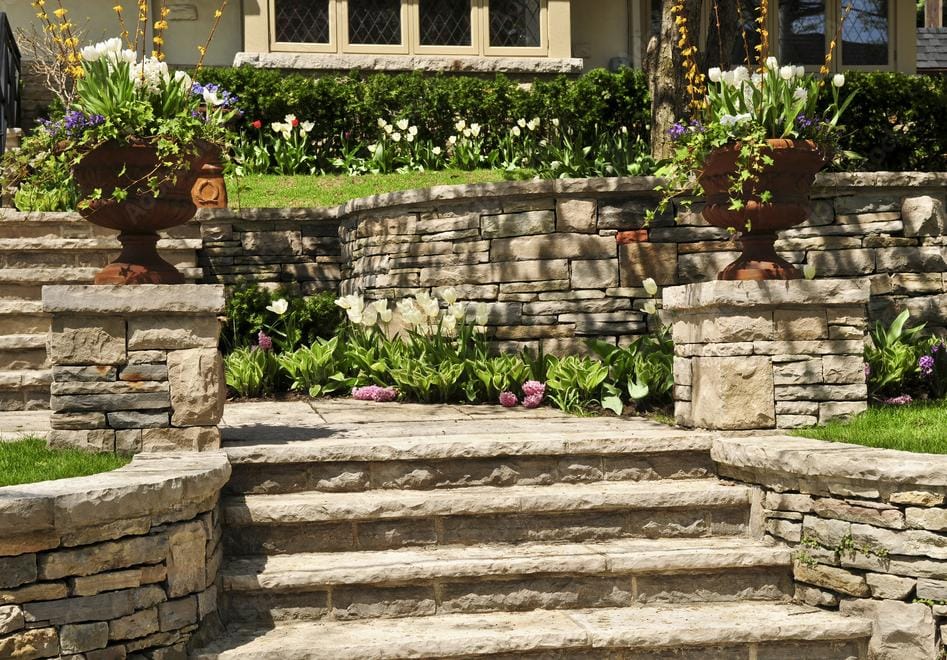
Using natural stone or decorative blocks, these walls can blend in with the environment and make your landscape more visually appealing. Many homeowners in Muskoka use retaining walls to create eye-catching spots in their gardens or add a rustic, charming look to their property.
Improving Drainage
Drainage refers to how water moves off your property. When it rains heavily, water can sometimes pool around your home, which can damage the foundation and your yard. This happens because the ground doesn’t always allow water to drain or flow away properly. Ideally, in this situation, the drainage system should be designed to allow water to flow away from your home. A retaining wall can help by guiding water away from your house, preventing it from gathering and causing harm. By controlling the flow of water, retaining walls protect your home and keep your yard healthy and attractive.
Types of Retaining Walls
Once you’ve decided that a retaining wall is the right solution for your landscape, you’ll find that there are many different types of retaining walls to choose from. Each type of retaining wall structure can be customized to match your design goals and specific needs.
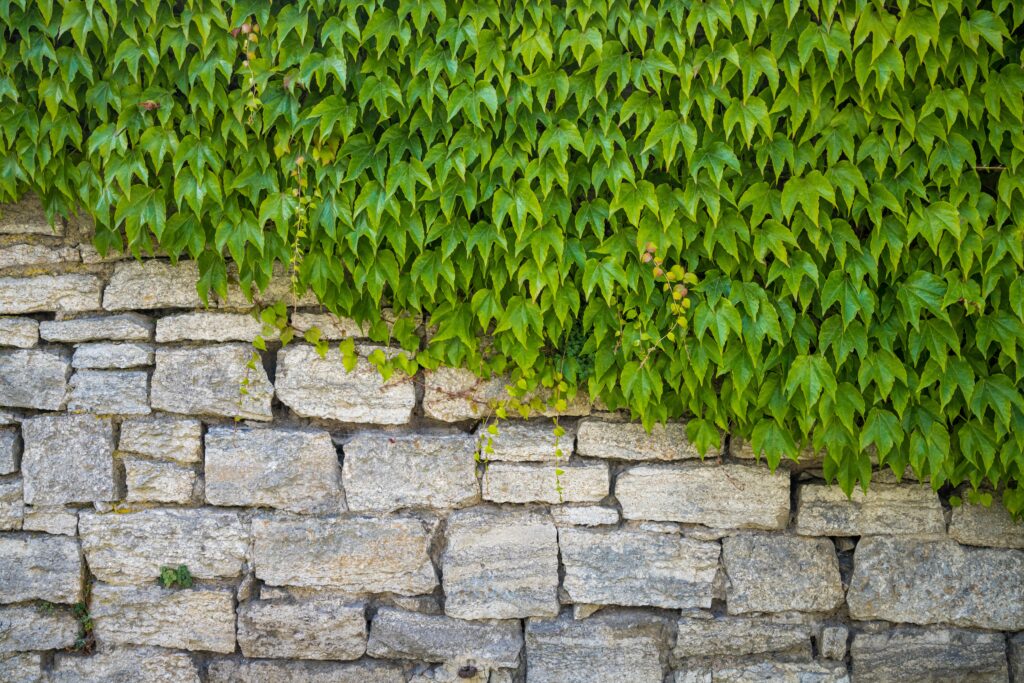
Whether you’re looking for something functional, aesthetic, or a combination of both, there’s a retaining wall option that can enhance your property while addressing practical concerns like soil stability and drainage.
Gravity Retaining Walls
A gravity retaining wall is a simple and effective way to hold back soil on sloped land. Made from heavy materials like concrete, stone, or brick, these walls rely on their own weight to keep soil in place, preventing it from washing away during rain. They are best suited for gently sloped yards and are commonly used to create garden beds, terraces, or other flat areas. Because they don’t require extra support structures, gravity retaining walls are easier to build and maintain, while also adding a strong and attractive feature to your landscape.
Cantilevered Retaining Walls
Cantilever walls are a smart solution for handling steep slopes or areas with a lot of soil pressure. They work by using a concrete slab that extends underground to anchor the wall in place. This design uses both the weight of the wall and the pressure from the soil to keep everything stable. Because of this, cantilevered walls are perfect for taller structures where extra support is needed. They are strong, durable, and can be designed to fit well with your landscape, making them a reliable choice for challenging terrains.
Sheet Piling Retaining Walls
Sheet pile retaining walls are made from long, thin sheets of material (usually steel, vinyl, or wood) that are driven deep into the ground to create a strong barrier. These walls are often used in areas with limited space, soft soils, or where deep excavation is required.
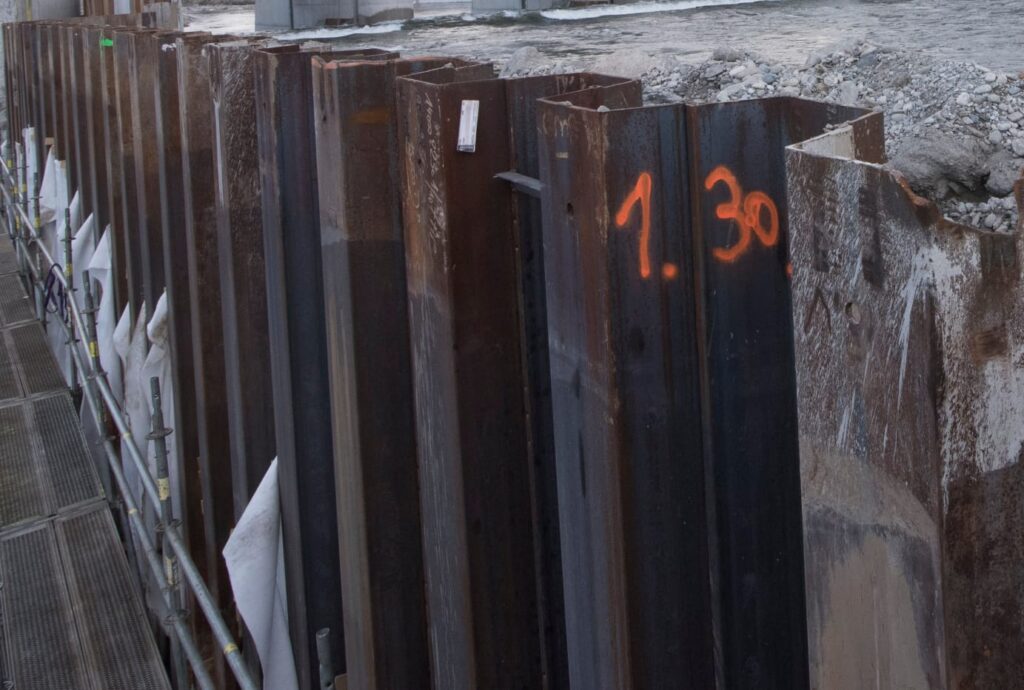
Sheet pile walls are particularly effective for holding back water or for construction projects near bodies of water, such as seawalls or bulkheads. You might choose a sheet pile retaining wall if you need a durable solution for a challenging environment, especially where space is limited or soil conditions are poor.
Anchored Retaining Walls
Anchored retaining walls are made from materials like concrete, steel, or wood, with cables or rods deeply embedded into the soil to provide extra reinforcement. These walls are perfect for areas with steep slopes, high-pressure loads, or unstable soil, where extra support is crucial.
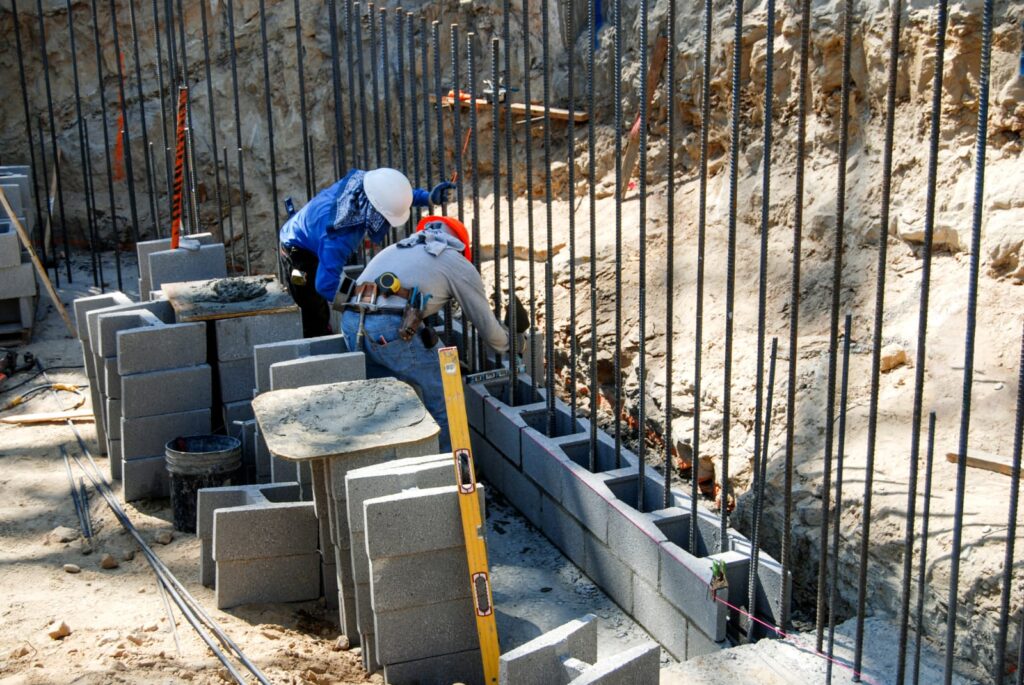
Homeowners or businesses with properties that face significant soil movement, tall structures, or heavy loads might choose anchored retaining walls for their superior strength and stability. They’re a go-to solution when other types of walls aren’t strong enough to handle the demands of the landscape.
Segmental Retaining Walls
Segmental retaining walls are perfect for homeowners who want a blend of functionality and aesthetic appeal. These walls are constructed using interlocking blocks that don’t require mortar, allowing for flexible design options. They’re particularly popular in residential landscaping projects where appearance is as important as function, offering a visually pleasing solution that’s also durable and easy to maintain.
Brick Retaining Walls
Brick retaining walls are built using bricks that are typically laid in a specific pattern and secured with mortar. They offer a classic, timeless appearance that works well in both traditional and modern landscapes. These walls are commonly used in gardens, patios, and formal outdoor spaces where a refined and structured look is desired. Brick retaining walls are ideal for low to medium-height walls, providing both aesthetic appeal and durability. You might choose a brick retaining wall if you want to add a touch of elegance and tradition to your outdoor space.
Wood Retaining Walls
Wood retaining walls are constructed from treated timber or logs, giving a natural, rustic look that blends seamlessly with the outdoors. These walls are commonly used in residential landscapes, especially in gardens and yards where a more organic feel is desired.
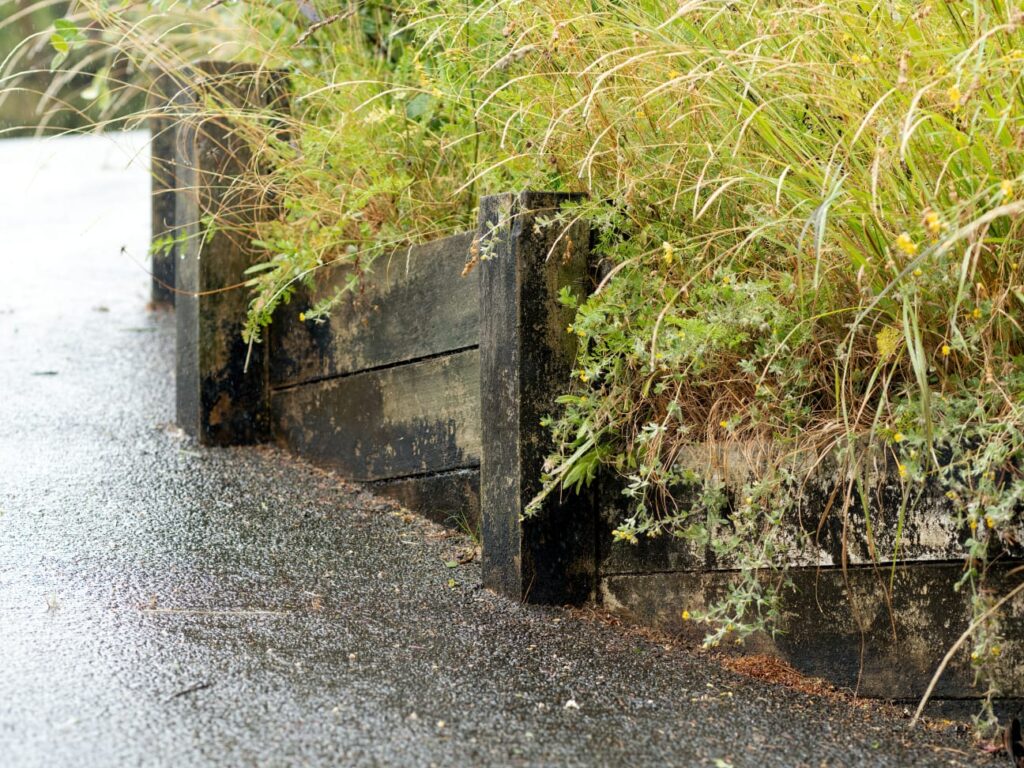
Wood retaining walls are particularly suited for lower-height applications and are relatively easy and quick to install. You might choose a wood retaining wall if you want a cost-effective, natural-looking option that complements a rustic or casual landscape design.
Steel Retaining Walls
A steel retaining wall is very strong and durable, making it a great choice if you need extra support. It works well for commercial properties or places with tough weather, like heavy rain, strong winds, extreme temperatures, or areas that flood easily. Steel walls are made from sheets or beams of steel and are good for tight spaces because they’re thin but can still hold a lot of weight. The main benefits of steel retaining walls are their strength, long-lasting durability, and ability to be used in many different settings.
Crib Walls
Crib walls are often used on properties with steep slopes, particularly in residential areas, commercial developments, or infrastructure projects like highways. These walls are ideal for properties that require strong soil retention and good drainage.
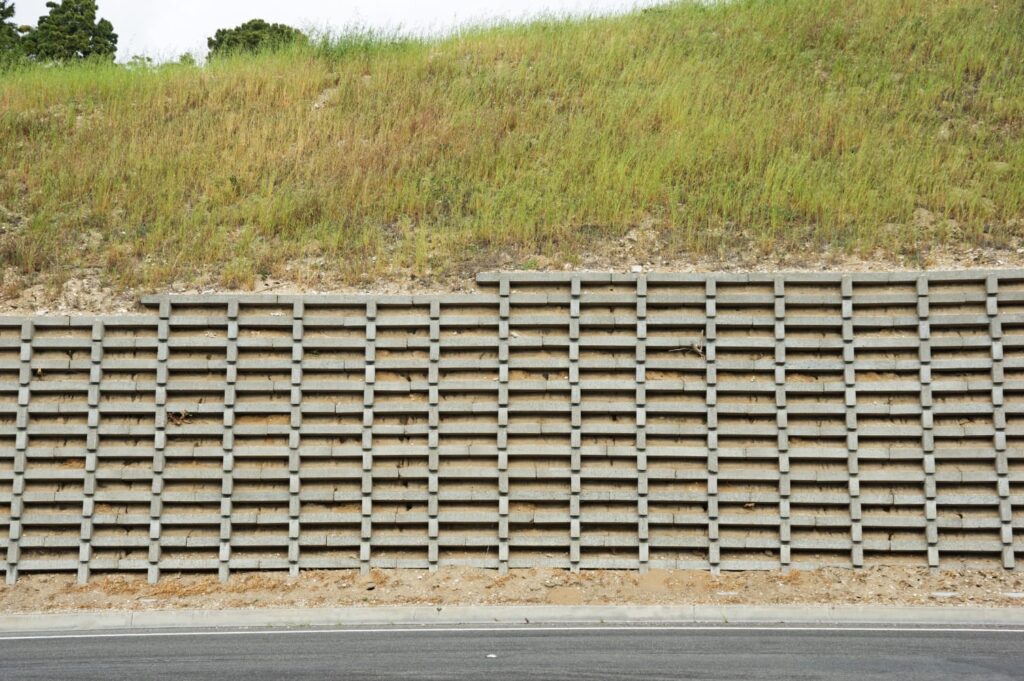
They are also suitable for areas prone to ground movement, as the interlocking design of crib walls provides flexibility and stability. Properties that need a durable retaining solution with a natural or rugged appearance might also choose crib walls, especially when aesthetics are important.
Stone Walls
Stone retaining walls are built using natural stones like granite, limestone, or sandstone, creating a strong and attractive structure. They are often used to hold back soil on sloped areas, in gardens, or along paths.
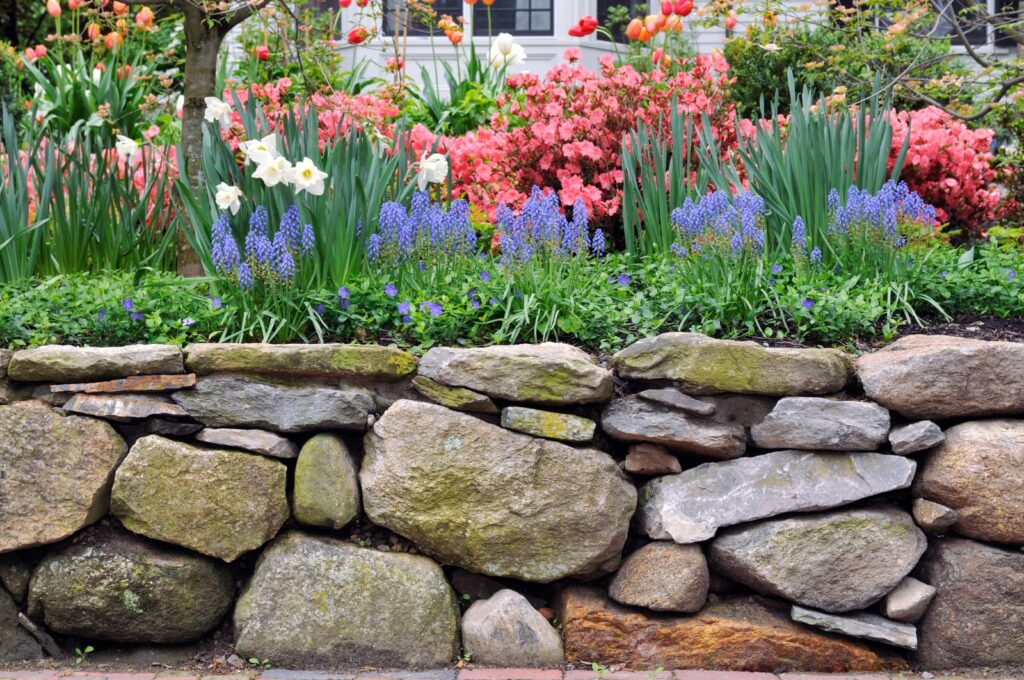
People like stone walls because they have a natural, classic look that fits well with the environment. These walls are strong and last a long time, making them a great choice for adding beauty to a property while also keeping soil in place and preventing erosion.
Gabion Walls
Gabion walls are made from wire mesh baskets filled with rocks, stones, or concrete. These walls are often used to control erosion, stabilize slopes, or build retaining walls in areas with poor soil or drainage problems.
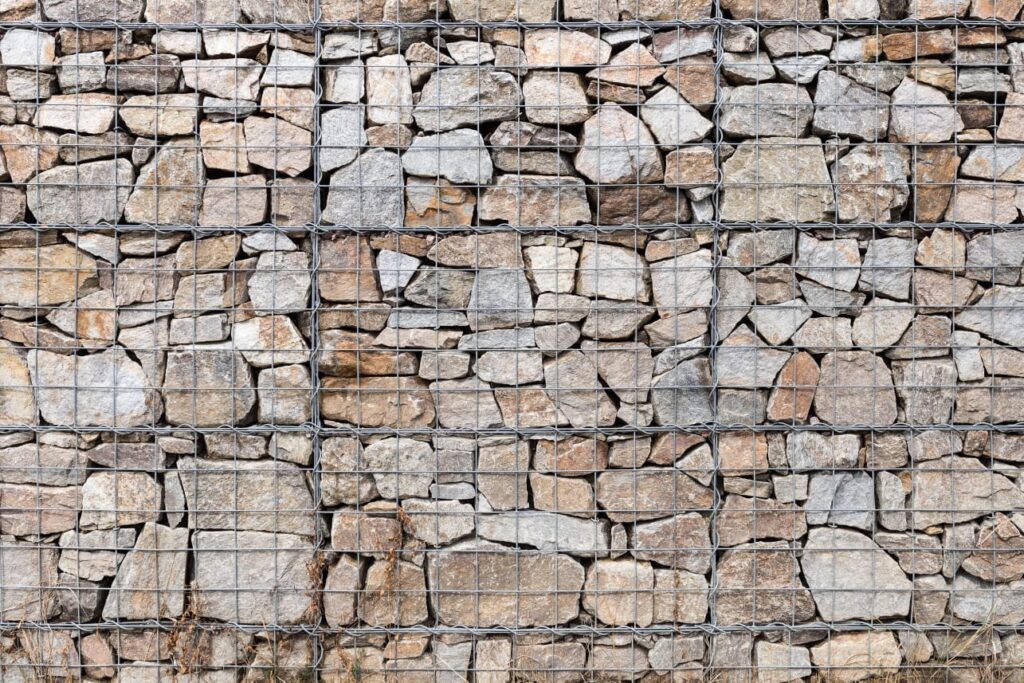
The spaces between the rocks allow water to pass through, which helps reduce pressure on the wall. Gabion walls are strong, affordable, and add a natural, rugged look to the landscape, making them a good choice for areas where managing water is important. Each type of retaining wall serves a specific purpose, and the choice of wall depends on factors such as soil type, landscape design, and the wall’s intended height. In the Muskoka region, these walls are often used to manage the unique challenges of the local terrain, ensuring both functional and beautiful outdoor spaces
Retaining Wall Design and Building
When planning your retaining wall structure, it’s important to consider the specific needs of your property. The type of soil, the slope of the land, and water drainage are all crucial factors. Your wall needs to be strong enough to hold back the soil and withstand the pressure it creates.
Retaining Wall Materials
The material you choose for your retaining wall can greatly affect both its appearance and functionality. Each material has its own set of benefits and the one you use is based on the specific needs of your property.
- Concrete blocks are an excellent choice for homeowners who want materials that are easy to install and flexible enough to create curved walls, allowing for versatile design options.
- Poured concrete offers a durable and sleek look, perfect for those seeking a modern, long-lasting solution.
- Stone provides a timeless, natural appearance that seamlessly blends with the surrounding landscape.
- Brick brings a traditional, classic aesthetic, ideal for more formal garden settings.
- Wood offers a natural, rustic charm but may require more maintenance over time.
- Steel is the best option for strength and versatility, especially in areas where extra durability is needed.
Retaining Walls Design
When it comes to retaining wall designs, there are several options to choose from, depending on your needs and aesthetic preferences. Common designs include straight walls, curved walls, and tiered or terraced walls.
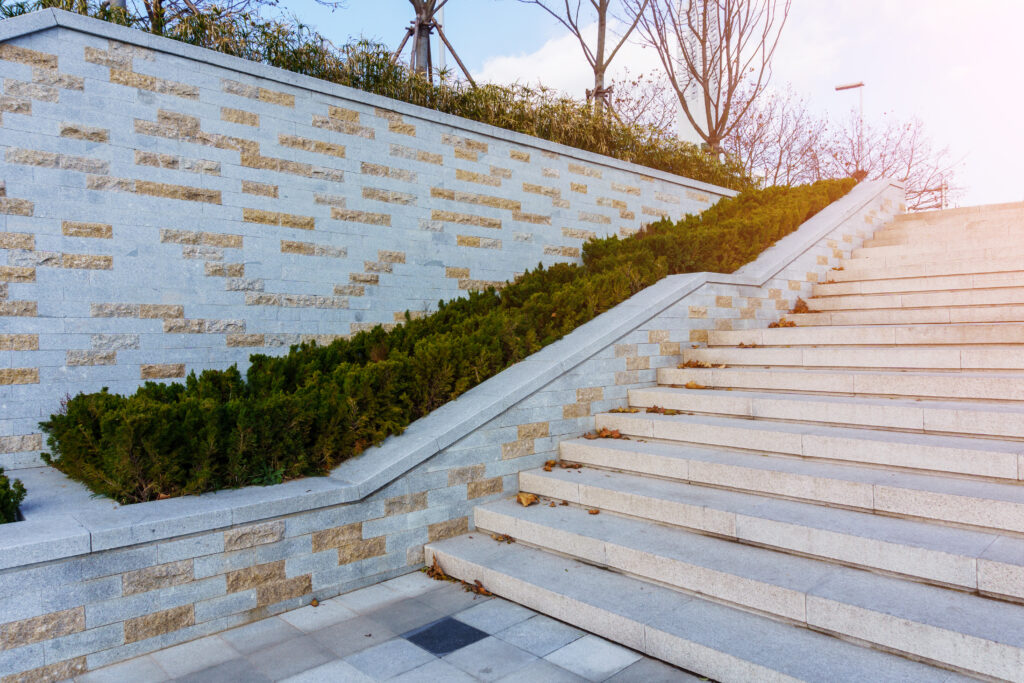
- Straight walls give your property a simple and classic, best for clean, modern looks.
- Curved walls add a softer, more natural feel, perfect for blending with the landscape.
- Tiered walls are ideal for steep slopes, creating multiple levels for planting or pathways.
When selecting a design, consider the slope of your land, the intended function of the wall, and how it will integrate with your existing landscape. Additionally, think about the materials you want to use, as they can significantly impact the wall’s appearance and durability. For example, natural stones provide a timeless look, while concrete can offer a sleek, modern feel. It’s also essential to consider drainage and stability in the design to ensure the wall performs its function effectively over time.
Building a retaining wall requires careful planning to ensure it’s durable and effective. Because following the rules and achieving the desired results is crucial, it’s usually best to hire professionals for the job. At Thornton Hardscape Inc., we can help you understand what is a retaining wall and if it would work for your property. We specialize in designing and constructing retaining walls that meet all requirements while bringing your vision to life. Our experienced team is equipped to deliver high-quality results that will last. We work closely with you from the initial design to the final construction, ensuring your outdoor space is both functional and beautiful. Contact Muskoka’s best today.
